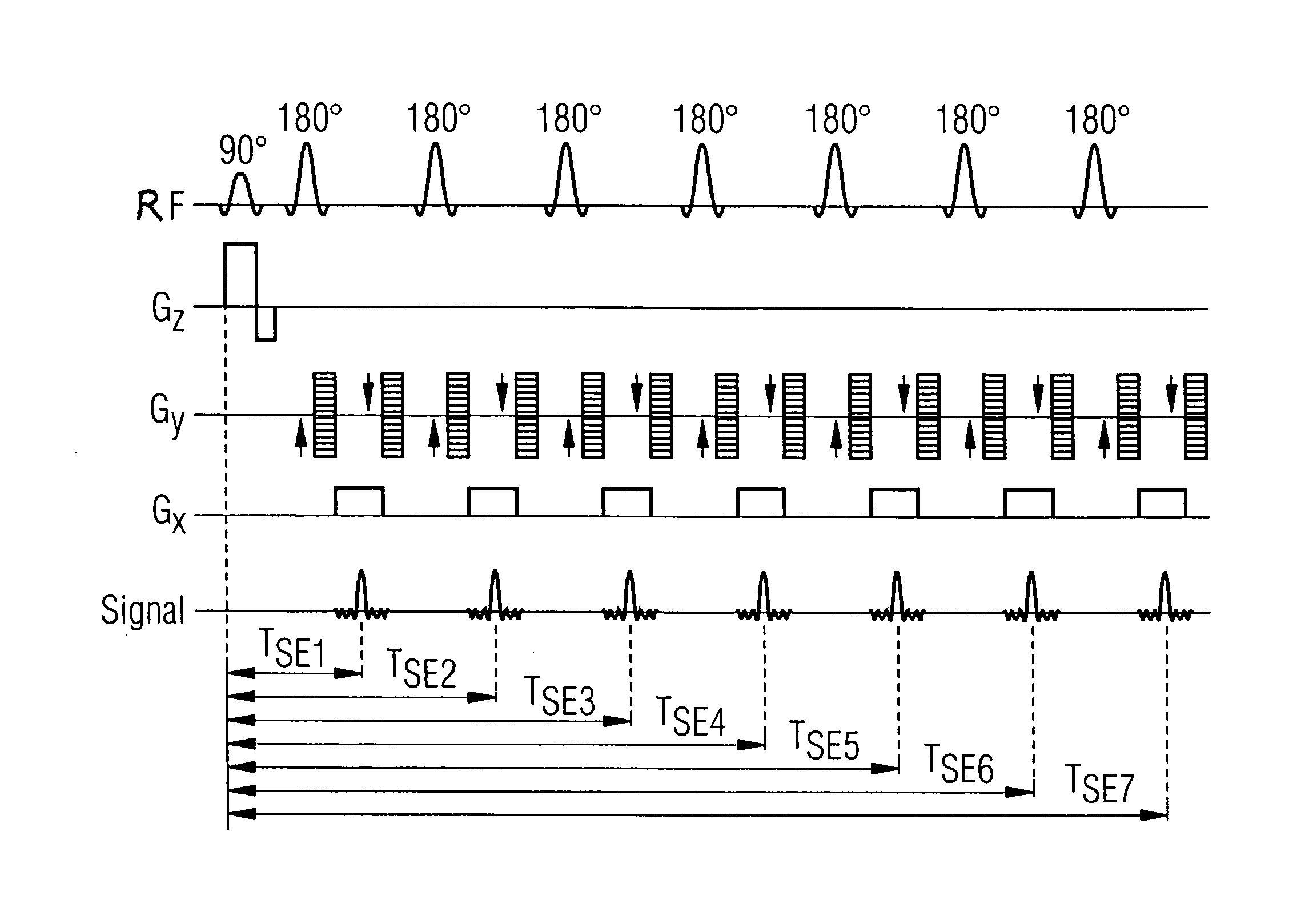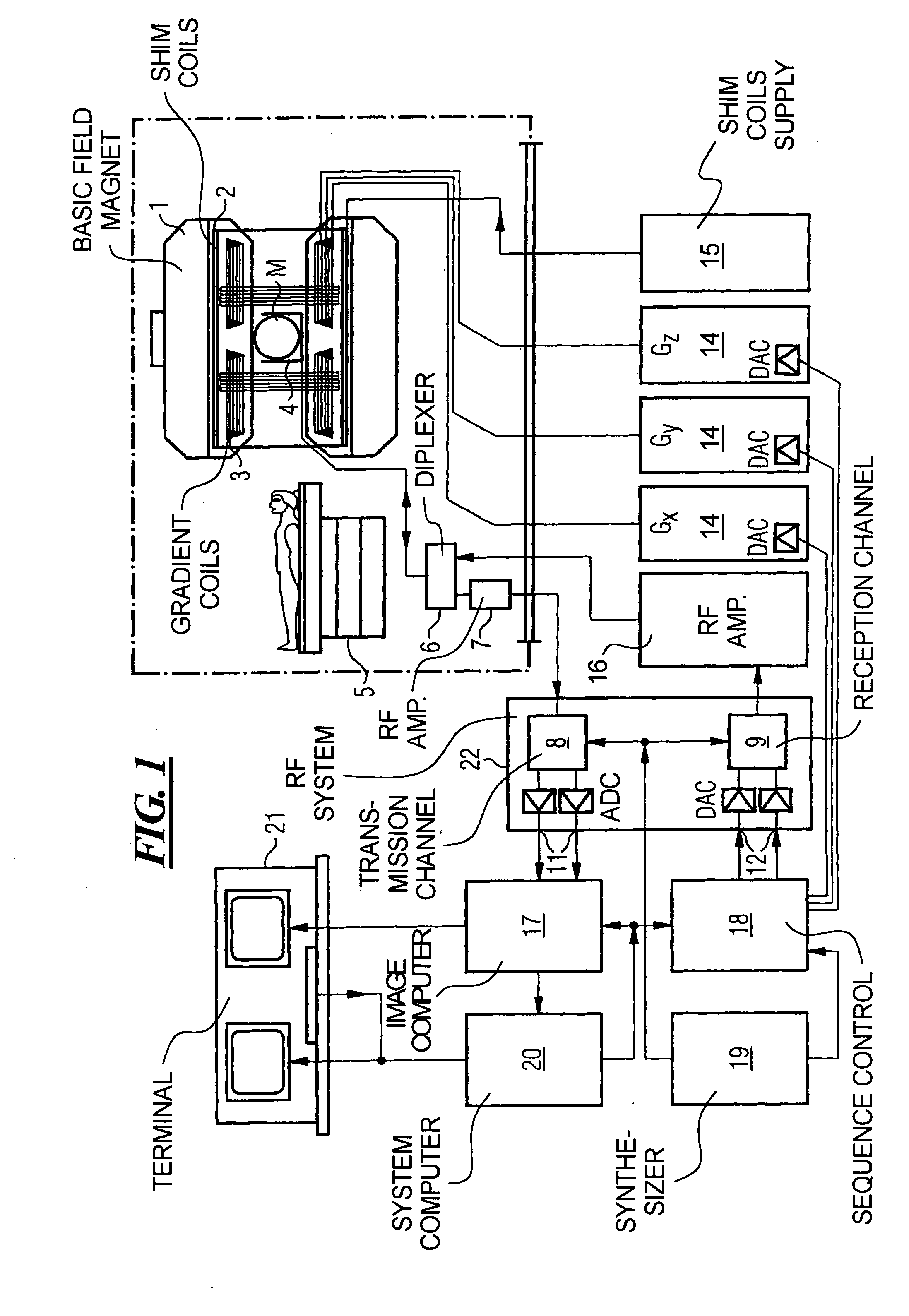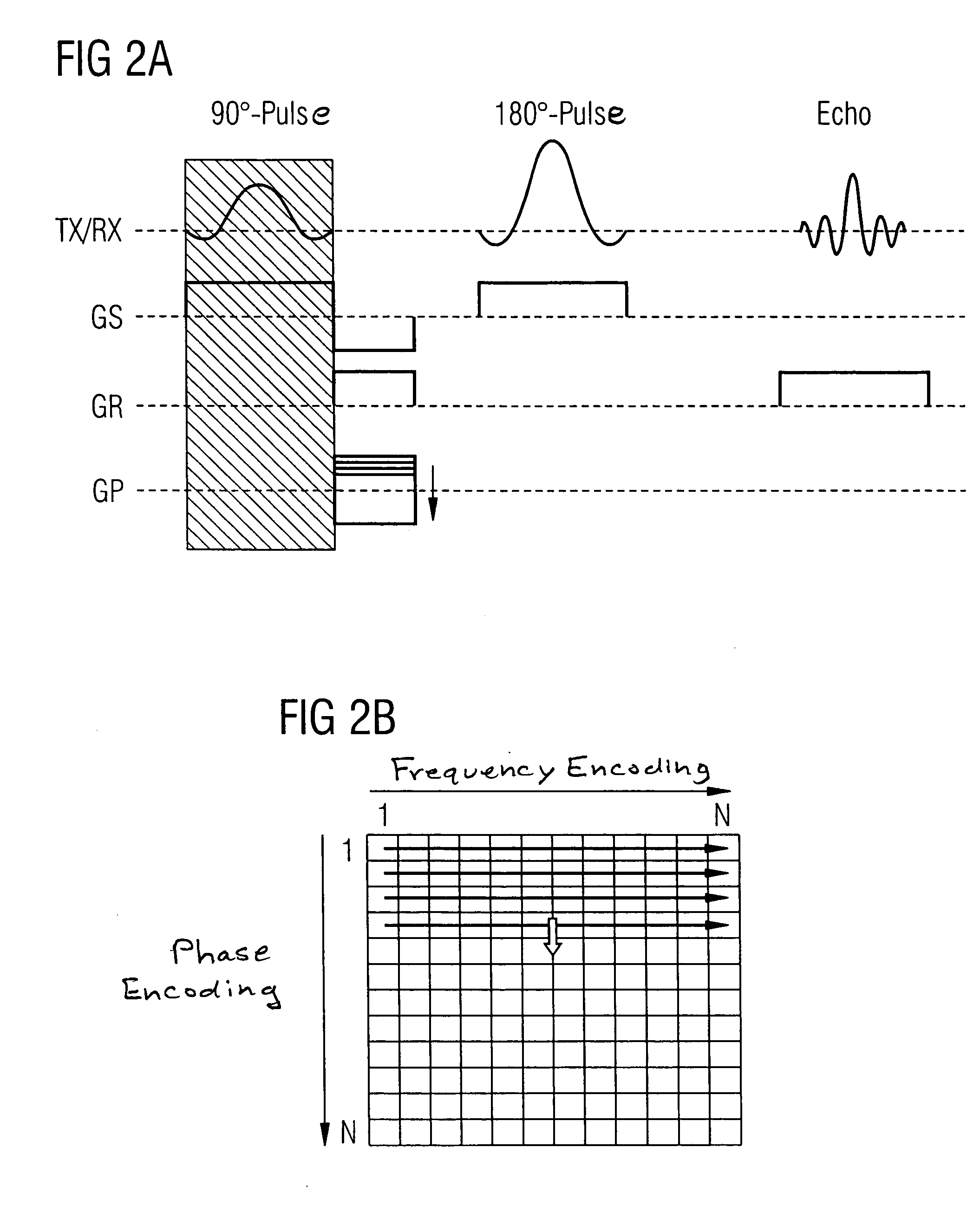Magnetic resonance tomography method and apparatus with suppression of ambiguity artifacts in spin echo images
- Summary
- Abstract
- Description
- Claims
- Application Information
AI Technical Summary
Benefits of technology
Problems solved by technology
Method used
Image
Examples
second embodiment
In the invention (FIG. 4B), the variation of the parameters occurs by the total duration of the α pulse and the first slice selection gradient GS1 remaining the same, with the pulse amplitude g1 being increased relative to the amplitude g2 of GS2. The α pulse is compressed, but the original pulse duration remains by further side lobes of the sinc-function of the excitation pulse being added with the advantageous side effect of an improved slice profile. This has only a minimal effect on the SAR value, since the unchanged refocusing pulses dominate. The average frequencies ω1 and ω2 as well as the bandwidths Δω1 and Δω2 are varied correspondingly and are adjusted for each other correspondingly.
The FIGS. 5A and 6A (left image in each) show the undesired or parasitic layer excitation inside or outside of the FOV with a conventional spin-echo sequence. Due to the human body form and the conventional patient positioning, field ambiguities occur primarily in the longitudinal body positio...
PUM
 Login to View More
Login to View More Abstract
Description
Claims
Application Information
 Login to View More
Login to View More - R&D
- Intellectual Property
- Life Sciences
- Materials
- Tech Scout
- Unparalleled Data Quality
- Higher Quality Content
- 60% Fewer Hallucinations
Browse by: Latest US Patents, China's latest patents, Technical Efficacy Thesaurus, Application Domain, Technology Topic, Popular Technical Reports.
© 2025 PatSnap. All rights reserved.Legal|Privacy policy|Modern Slavery Act Transparency Statement|Sitemap|About US| Contact US: help@patsnap.com



